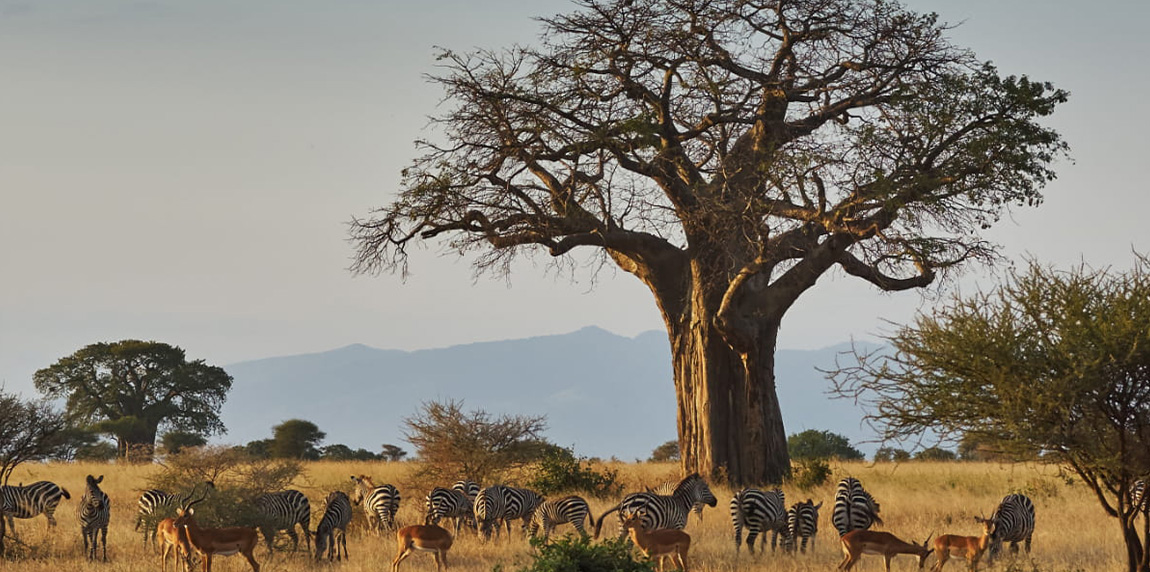Tarangire National Park spreads over a grand 2,600 square meters of land, and is the sixth largest national park in Tanzania. It’s located within the Manyara region, 18 kilometers from Arusha town. It receives its name from the Tarangire River, which is a key feature of the park, and a life source for both human and animal inhabitants, during both wet and dry seasons.
In the dry season, between June to November, the river remains one of the only water sources within said region. Therefore, a small migration consisting of around 250,000 animals, can be seen moving through the park, to access the river.
Aside from the river, the park is distinguished for its dry landscape, even more so than the Serengeti. It is also decorated with acacia woodlands, an aquatic forest, and large baobabs. These baobabs can be between 500-2000 years old, and compensates for the dry surroundings, as they are able to store 300-900 liters of water within their trunks.
Other fascinating attractions of the park include the African pythons, which can be found slithering up the huge baobabs. As well as exceptionally large herds of elephants; some having up to 300 members per group. The 550 bird species can also not be overlooked, as these consist of the heaviest flying bird alive, the Kori bustard, and also the largest living bird, the stocking-thighed ostrich.
